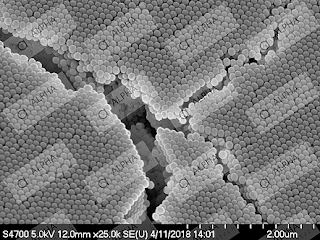Introduction:
In the realm of biotechnology and
biomedical research, the development of advanced materials plays a pivotal role
in enabling innovative applications. Two such materials that have garnered
significant attention are amine-terminated magnetic silica beads and magnetic silica nanoparticles. In this
blog post, we will explore the remarkable properties and applications of these
magnetic silica-based materials, highlighting their contributions to biomedical
research and therapy.
 |
| Magnetic Silica Nanoparticles |
Amine-Terminated
Magnetic Silica Beads:
Amine-terminated
magnetic silica beads
are composite particles that combine the magnetic properties of iron oxide with
the surface functionality of amine groups. These beads typically consist of a
core of magnetic iron oxide encapsulated within a silica shell, and the surface
is modified with amine (-NH2) groups. This unique combination of magnetic and
amine functionalities opens up a wide range of possibilities in various
biomedical applications.
Applications of
Amine-Terminated Magnetic Silica Beads:
Biomolecule
Conjugation: The
presence of amine groups on the surface of these beads enables easy conjugation
with various biomolecules, such as antibodies, enzymes, and nucleic acids. This
feature allows researchers to attach specific biomolecules onto the beads,
facilitating targeted binding and detection in diagnostics, drug delivery, and
biosensing applications.
Magnetic
Separation and Purification: The
magnetic properties of these beads enable their rapid and efficient separation
from complex biological samples using external magnetic fields. They are
extensively used for biomolecule purification, isolation of target cells, and
separation of biomolecules from interfering components in complex mixtures.
Drug Delivery
Systems: Amine-terminated
magnetic silica beads can be utilized as carriers for drug delivery systems. By
loading therapeutic agents onto the beads, they can be targeted to specific
sites within the body using external magnetic fields. This localized drug
delivery approach offers enhanced efficacy, reduced side effects, and increased
treatment precision.




